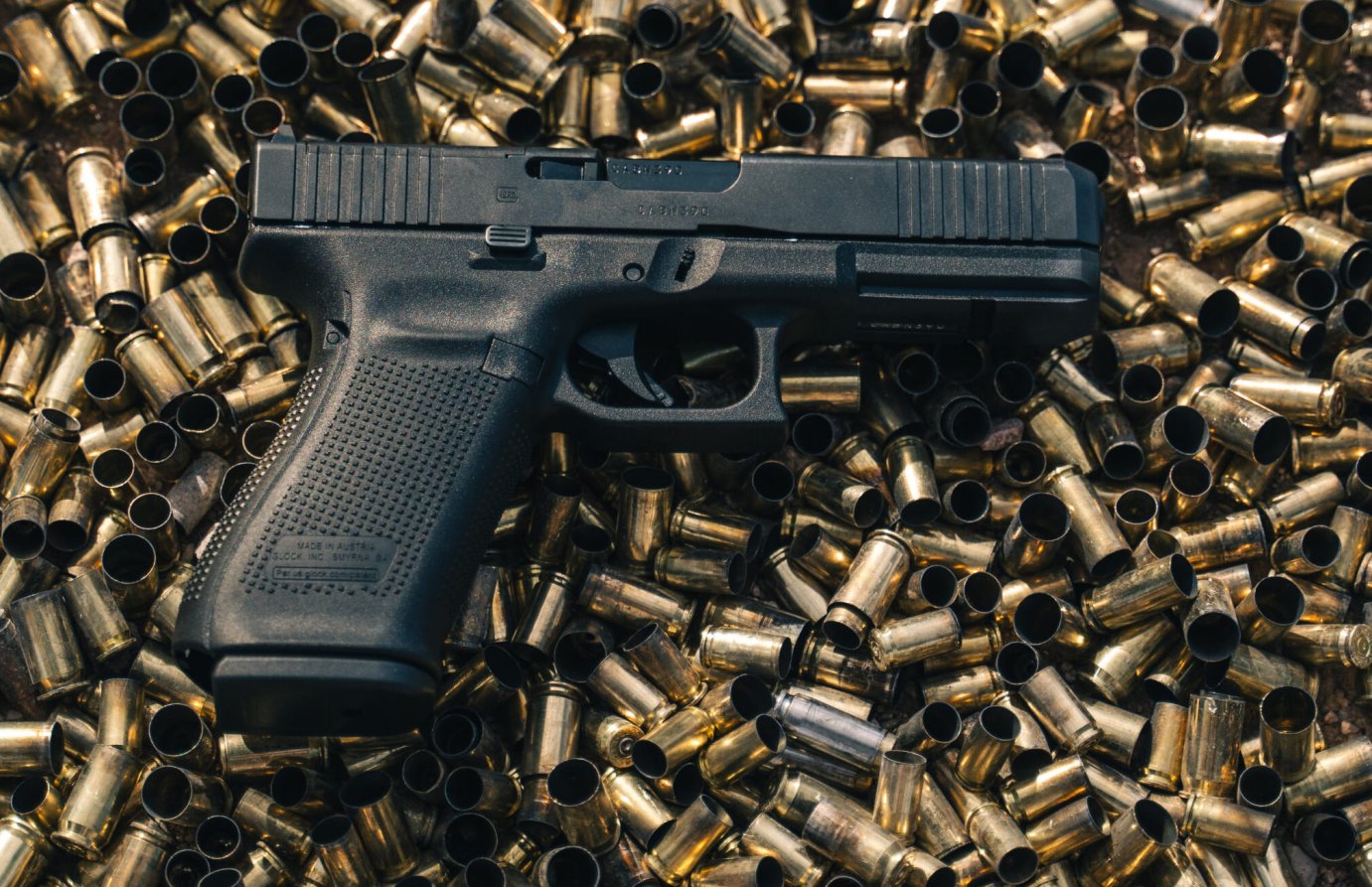We may earn revenue from the products available on this page and participate in affiliate programs. Learn More ›
The 10mm Auto has seen an unprecedented resurgence in popularity in the last 5 to 10 years, and the Glock G20 has become the standard against which all other 10mm pistols are measured. Ballistically similar to the .357 Magnum, the 10mm Auto has experienced snowballing acceptance as a bear and backcountry defense cartridge. The Glock G20 is what many hunters and anglers are wearing on their chest these days. Despite the cheeky motto of “Perfection,” Glock has found room for improvement in their designs, and the Glock G20 Gen 5 MOS is their best 10mm yet.
Glock G20 Gen 5 MOS Specs
- Caliber: 10mm Auto
- Capacity: 15+1
- Magazine Material: Metal-lined polymer
- Dimensions: 5.5 inches (H) x 8 inches (L) x 1.1 inches (W)
- Weight: 29.8 ounces (measured with empty magazine)
- Frame: Black Polymer, single-slot accessory rail, two additional backstraps
- Slide: Steel, black nDLC finish
- Barrel: 4.61-inches, black nDLC finish
- Sights: Standard Glock white U-notch rear, white front dot
- Optic: Glock MOS optics mounting system
- Trigger: Single action, 5 pounds, 11 ounces (measured)
- Safety: No external safety, trigger bar safety only
- MSRP: $660
Why the Glock G20 is the Gold Standard
The Glock G20 has become the go-to backcountry defense pistol for a couple big reasons: It’s simple, reliable, and easy to shoot. Second, it was essentially the only 10mm polymer pistol on the market when the 10mm got traction as a bear defense cartridge. When folks started recognizing the advantages of having a higher-capacity, easier-shooting pistol—and the ever-increasing data set of successful bear deterrence—the G20 was what we could get—and we gobbled them up as quickly as Glock could make them.
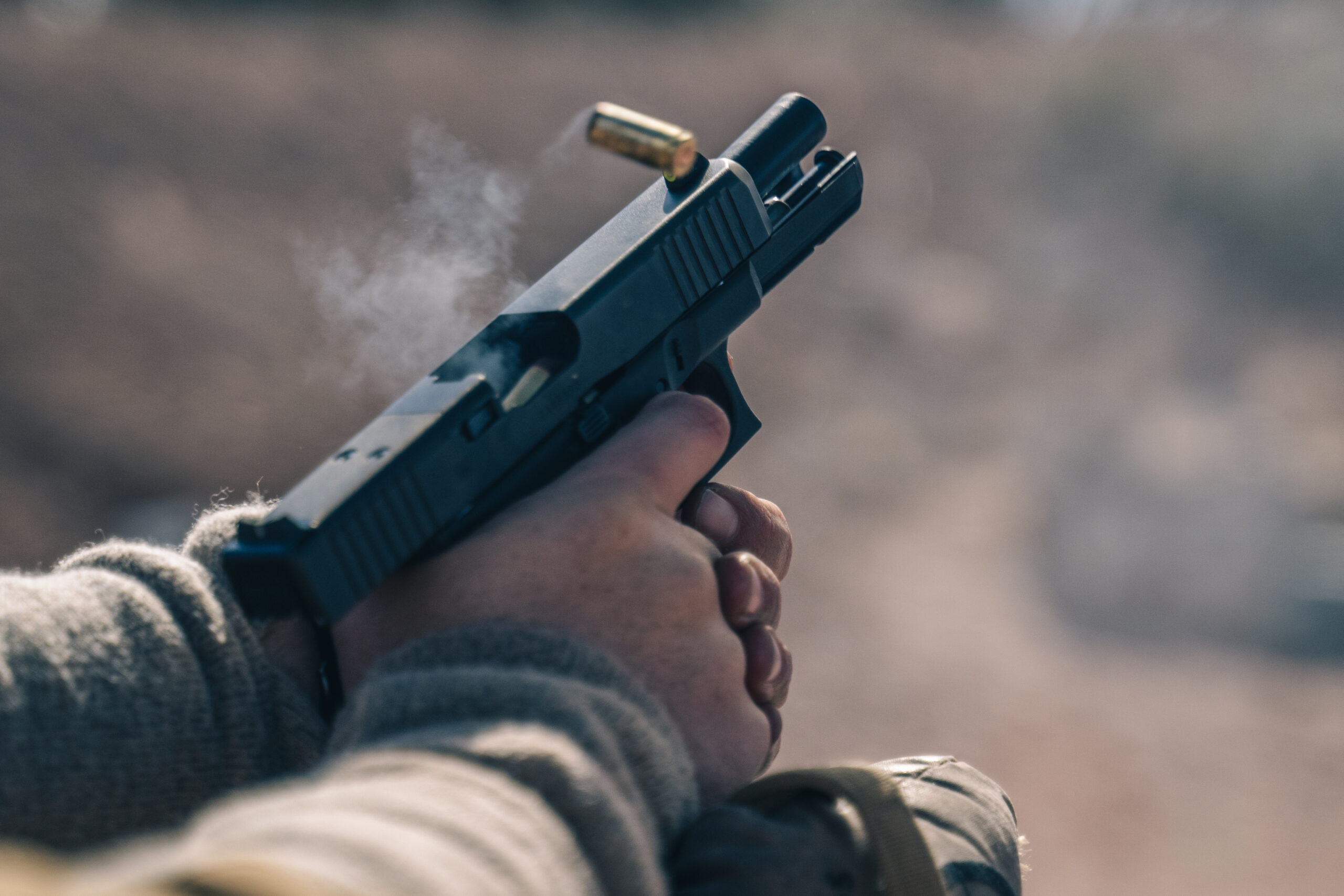
More than simply being a popular pistol, the Glock G20 has become synonymous with backcountry bear defense. It’s a niche that the gun fills perfectly. It’s rugged, reliable, shootable, can host a light, and has good capacity.
Like moths to a flame, other gun makers have recognized and flocked to the market, and new 10mm pistols have expanded options dramatically. Pistols from Springfield Armory, Smith & Wesson, Sig Sauer, FN, and others are giving the G20 plenty of competition, but the rollout of the Glock G20 Gen 5 MOS suggests that Glock has no intention of giving up the crown quietly.
What’s Different About the Glock G20 Gen 5 MOS?
A Glock is a Glock, and it’s always going to be a Glock. They’re rugged, reliable, and they simply work. Glock isn’t abandoning anything we like about their pistols with the Glock G20 Gen 5 MOS, but they have made some refinements that will please most shooters.
An Updated Frame
As with other Gen 5 Glock pistols, the Glock G20 Gen 5 MOS has some updates to the grip. Most obvious, they’ve ditched the awful finger grooves that the Gen 3 and Gen 4 Glock G20 sported. They got the hint, apparently, after scores of shooters made a standard practice of grinding those raised bumps off and stippling the grip. For many shooters, the finger grooves tended to impede, rather than aid, an optimal grip.
I wish Glock would adopt a more abrasive stipple-type texture that you’ll see on other pistols, but they carried over the raised texturing of the Gen 4 pistols, and it’s not bad. Additionally, the Glock G20 Gen 5 features a slight flare at the magwell. Like Gen 4 models, the new G20 comes with two additional backstrap attachments for fine-tuning your grip.
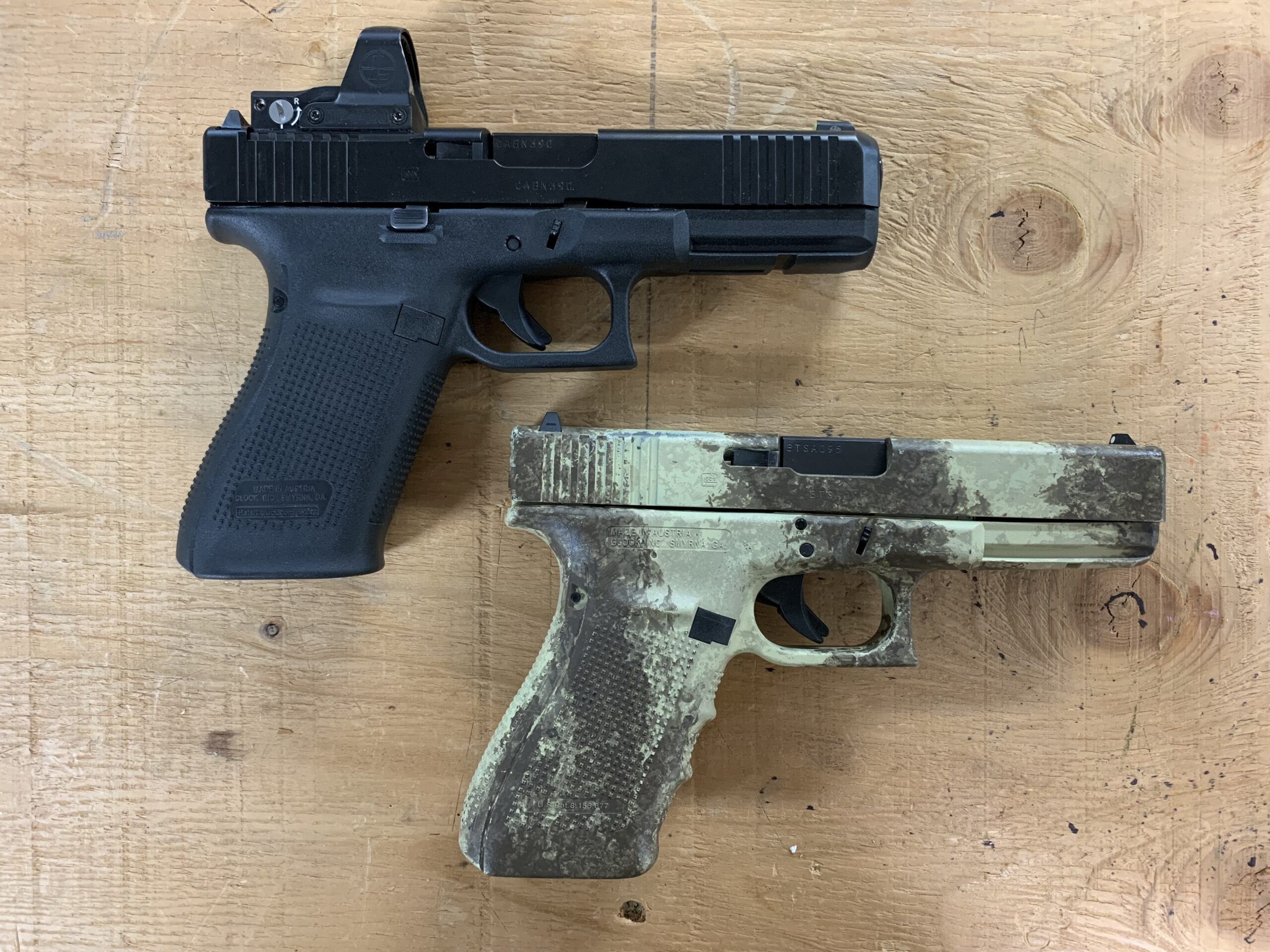
The Glock G20 Gen 5 MOS is Lefty-Friendly
Although the Glock G20 Gen 4, and other Gen 4 Glocks, have a reversible magazine catch button, the Glock G20 Gen 5 MOS has an ambidextrous slide stop lever too. This makes it an even better fit for oft-neglected left-handed shooters.
The slide stop levers themselves are simple bent tabs, and aren’t always even on both sides of the frame. One sight might be easier to operate than the other. A point of irritation for me is that the left side slide stop lever on my pistol doesn’t flare out as much, and it’s more difficult to engage than the right side. It’s easier to operate the slide stop from both sides with both my thumb and trigger finger simultaneously. It’s an OEM part that could be upgraded, but I’d like to see it be better out of the box.
Slide and Optics
The Glock Gen 5 pistols feature a couple key updates to the slide—both of which are major pluses. First, they have added forward cocking serrations. The finish on Glock slides has always been slippery as hell, and to a sophisticated “front-cocker” like myself, It’s always been annoying to have to slingshot my Glocks or use skateboard tape on the slide.
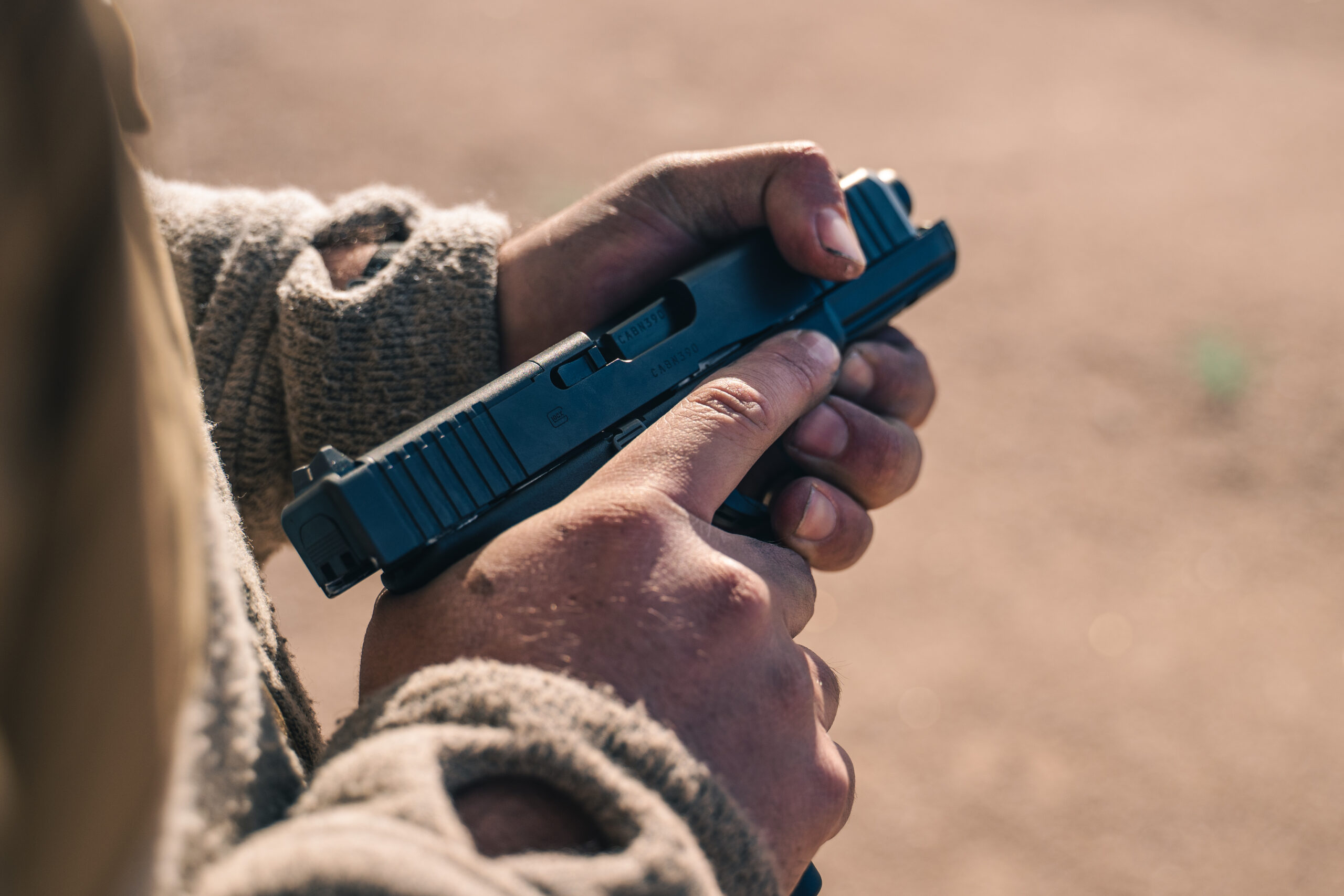
The MOS in the Glock G20 Gen 5 MOS stands for “Modular Optics System,” and it makes the G20 compatible with a variety of pistol red dot sights. The slide comes with a cover plate installed over the optics cut, but various adapter plates can be used. For speed and accuracy, optics are the way to go when it comes to handguns, and they’re now commonly used by many law enforcement agencies.
Like the updates to the frame and grip, forward cocking serrations and optics cuts are modifications that shooters would commonly farm out after buying the pistol, and it’s a net improvement to have them come standard now.
Shooting the Glock G20 Gen 5 MOS
In addition to my shooting, our test team put the new Glock G20 through its paces at our 2023 gun test, and we’ve put well over 1,000 rounds through the pistol. We fired lots of full-power Winchester USA Ready 180-grain FMJ, 180- and 200-grain hollowpoints, and I have fired just about every defensive 10mm ammo through the gun that I could find. Everything works, and there were no surprises. We shot the Glock G20 Gen 5 MOS both for accuracy and to evaluate its practical shooting and handling characteristics. We ran the G20 through our standard “bear gun drill” multiple times for each shooter, and our average best times were between 2.5 and 3 seconds. The drill consists of five staggered plates shot far-to-near from 25 to 10 yards, starting from a low-ready position.
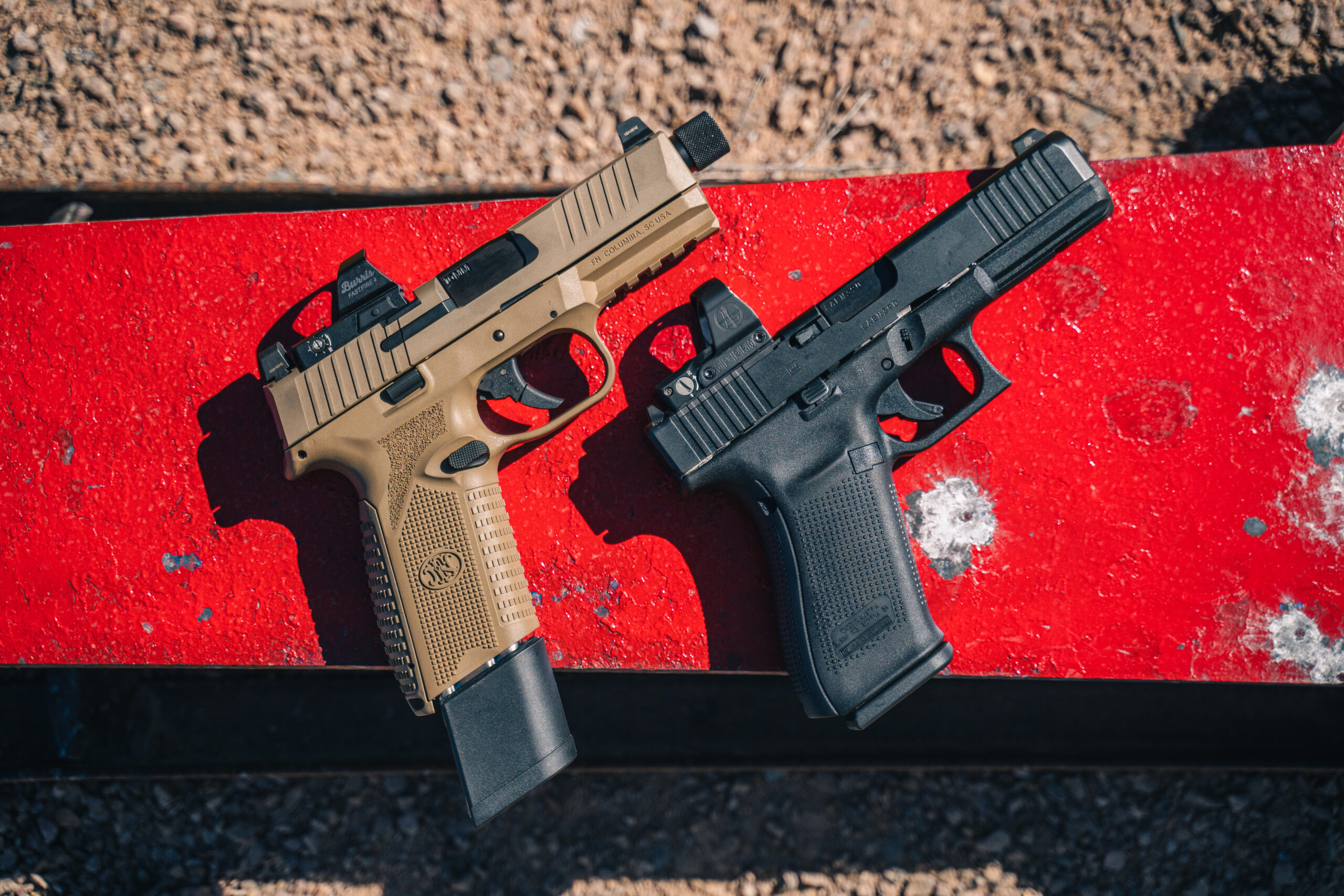
How Accurate is the Glock G20 Gen 5 MOS?
For accuracy, we fired 15 five-shot groups through the G20 from a bag-supported standing position at 15 yards with iron sights. The average spread of the top 10 groups was 2.29 inches. In fairness to the pistol, those groups were fired using XS Big Dot Express night sights, which are excellent for speed but not so much for precision. Factory Glock sights would likely yield slightly tighter groups, and a red dot would deliver optimal accuracy.
Finer Points of the Glock G20 Gen 5 MOS on the Range
A characteristic feature that Glock did not change on its grip is the grip angle. The steeper angle of Glock’s grips can take some getting used to. After firing close to 9,000 rounds through non-Glock pistols in the past three months, my drill times with the Glock G20 Gen 5 MOS lagged a half-second behind those of the FN 510—a pistol with a more vertical grip.
If the grip angle is a stumbling block for you, there’s an easy hack to help, courtesy of friend and USPSA GM Sean Murphy. Cut the bottom two thirds off one of the included grip backstraps, and install the top portion. It looks like shit, but with it, the gun points much more intuitively for me.
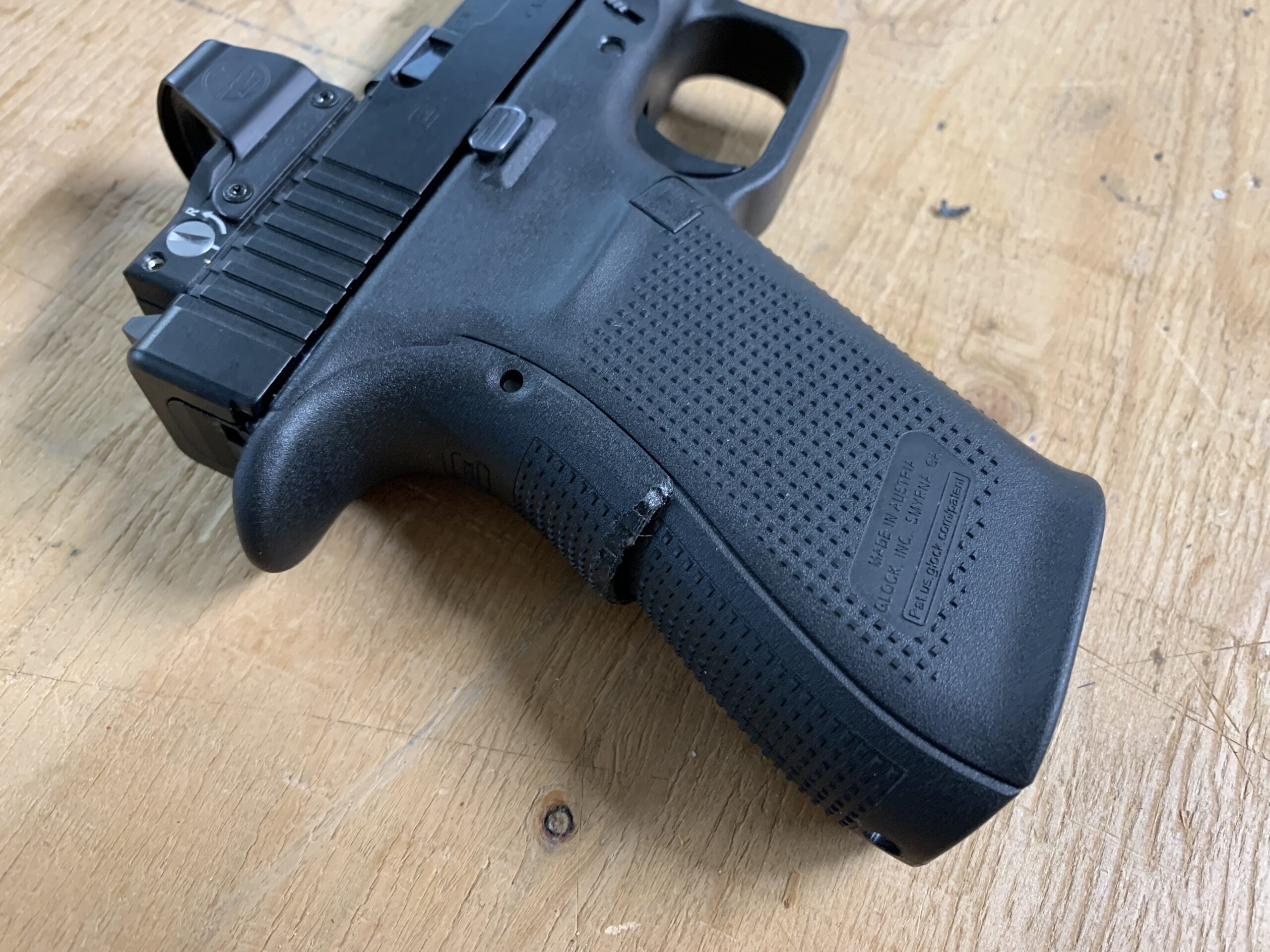
Heavy triggers and awful iron sights also go hand-in-hand with Glock pistols—so much so that aftermarket Glock sights and triggers have become their own mini industries. The trigger of my Glock G20 Gen 5 MOS is heavy, but otherwise not bad. It has a firm wall and a strong reset. It’s a functional and reliable trigger to use under stress. As with every Glock I buy, I immediately ditched the plastic factory sights in exchange for the aforementioned express sights. They’re fast to acquire and are excellent at close range.
The Glock G20 Gen 5 MOS, unsurprisingly, shoots, handles, and feels like a Glock. The 10mm Auto has a much sharper recoil impulse than the 9mm, but it’s pretty easy to manage in the new G20. In practice, the updates to the grip provide a more natural fit, and the pistol maintains its relevance as the tideline of the market.
The Glock G20 Gen 5 MOS Loaded for Bear
With the expanded market of 10mm pistols, the options for good 10mm ammo have increased tenfold or more. In this 10mm renaissance, the most popular type of ammunition for bear defense has been hot-loaded, heavy, hard-cast bullets loaded by boutique companies like Buffalo Bore. Personally, I prefer loads with Lehigh Defense Extreme Defense monolithic solids. Either way, you want something that will penetrate well with minimal deformation or expansion.
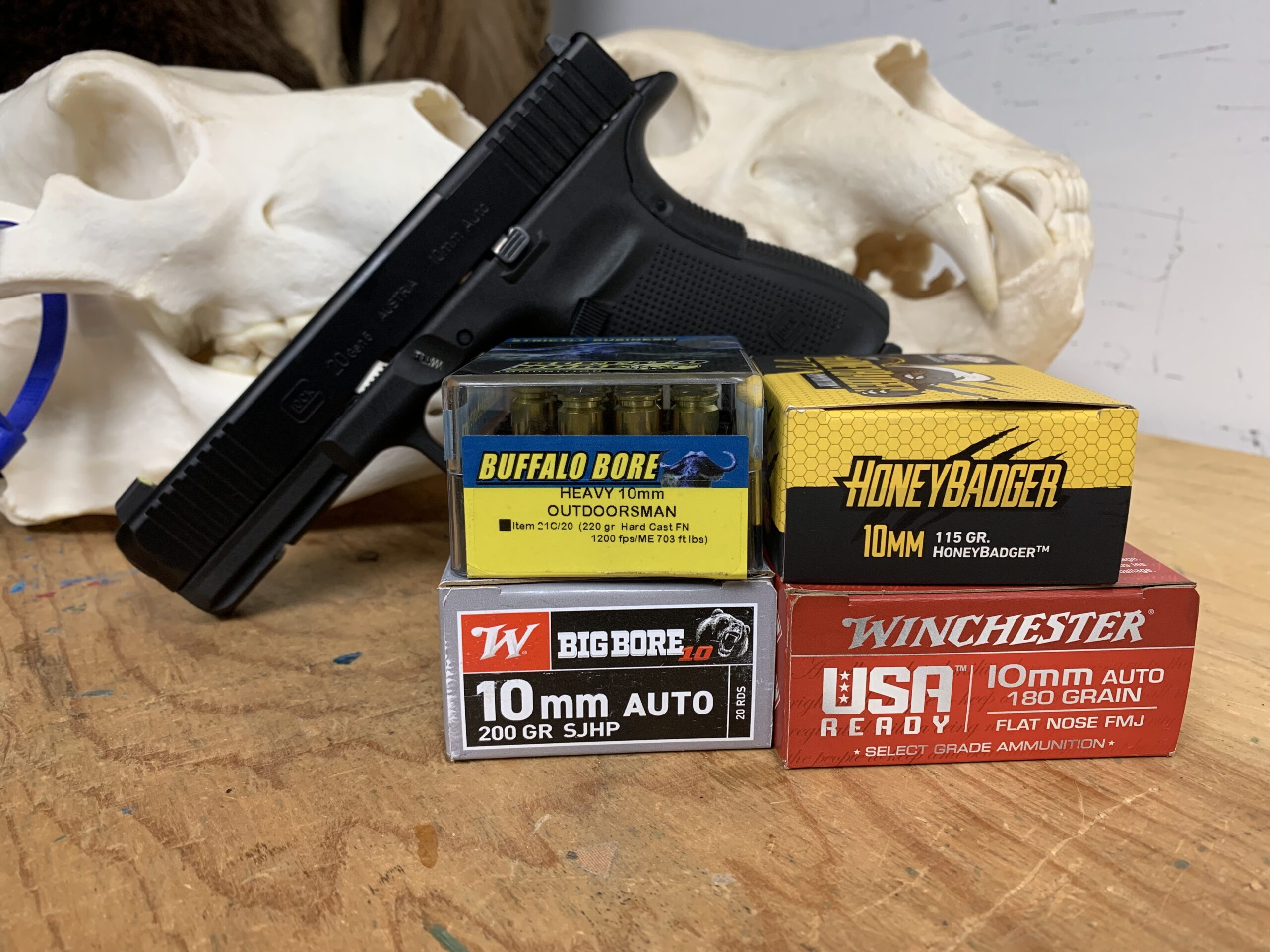
There are two big myths about Glock 10mm pistols—revolving around bear defense ammo—that you’ll commonly see on the internet or hear from the unwitting gun counter attendant:
- You have to buy an aftermarket barrel to shoot full-power ammo.
- You can’t shoot non-jacketed lead bullets through your G20.
With recent and current generation pistols like the Glock G20 Gen 5 MOS, both claims are false.
Although I wouldn’t call the G20 Gen 5’s chamber fully-supported, it offers good case head coverage. rather than a large gap at the head of the feed ramp, it appears that a portion of the rear of the chamber is expanded slightly for reliable feeding. Rather than a “Glock Smile” case bulge that you’d see on early Glock 10mm barrels, the high-pressure loads I tried showed a slight bulge over a greater surface area, and all the brass was easily sized back down. Any commercial factory-loaded ammunition is safe to shoot through the Glock G20 Gen 5 MOS.

Many people claim that hard-cast bullets will cause your OEM Glock barrel to explode—even after a few rounds. This is false. Glock’s riflings do accumulate more lead fouling than some other pistols, but it sticks to all of them, and it’s always prudent to clean out lead fouling before switching back to jacketed ammunition. With excessive lead fouling, a jacketed bullet could cause a dangerous increase in pressure.
What the Glock G20 Gen 5 MOS Does Well
The Glock G20 Gen 5 MOS is simple, reliable, and shootable. The Gen 5 improvements have made it even better, and it remains an excellent standard for bear defense pistols.
Where the Glock G20 Gen 5 MOS Could Be Better
The Glock G20 Gen 5 MOS could use a better trigger, and better OEM sights, but so could every Glock.
FAQ
The Glock G20 Gen 5 MOS can be found for about $700.
Yes, the new G20 Gen 5 MOS is optics-ready
Yes, you can fire factory-loaded hard-cast bullets through a Glock G20 Gen 5 MOS and Gen 3-4 pistols too. It’s important to clean out the lead fouling before you switch to jacketed bullets though.
Final Thought on the Glock G20 Gen 5 MOS
Updates that are included in the Glock G20 Gen 5 MOS only make the gun more relevant in the ever-expanding market for 10mm pistols. It’s everything we know Glocks to be, and there isn’t anything notable to complain about. I’d carry this pistol with 100 percent confidence. It remains the rubric by which I’ll judge any other 10mm pistol I test.
